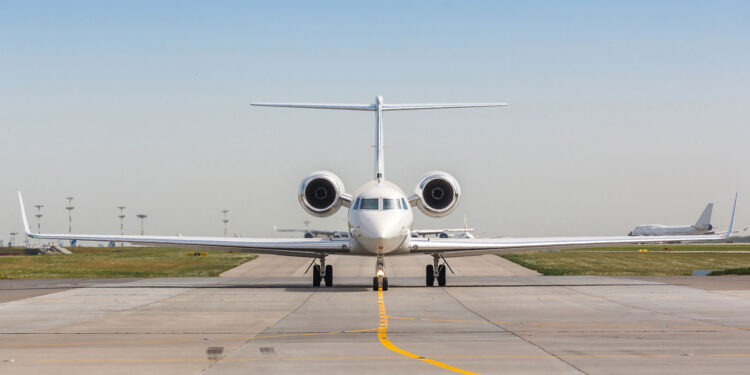Aircraft Weight & Equipment – Impact on Flight Planning: Part 1 – Basic Considerations

This business aviation blog post is part of a series on weight and equipment impact on flight plans.
Flight plans are highly dependent upon aircraft weight. When an aircraft is heavier, this affects climb performance and flight level capability as well as available payload and range potential. Weight is always one of most important flight planning considerations as it impacts overall performance/range so dramatically.
The following is an overview of what you need to know:
1. Weight components
Basic weight considerations for flight planning include maximum takeoff weight (MTOW) and landing weight, and both of these are provided by the manufacturer. In addition, you’ll need to know basic operating weight (BOW), max zero fuel weight, and payload – and these vary by the particular operator/aircraft and/or flight. BOW is empty aircraft weight, and some operators add crew weight to this while others do not. Max zero fuel weight includes the aircraft, its contents, and any un-useable fuel. Payload weights are often calculated differently, depending on the operator. While some operators use an average passenger/luggage weight – often 200 pounds per passenger or, in Asia, perhaps slightly less per passenger – many operators calculate specific weights for passenger loads, luggage, in-flight catering, etc. An item such as a retrofitted onboard shower, for example, impacts BOW, while the volume of water carried for the shower adds to payload.
2. Weight impact on flight plans
Your flight planner needs to know accurate calculations for takeoff weight (TOW), landing weight, BOW and payload in order to generate accurate flight plans. Distribution of weight within an aircraft (weight and balance) is, however, a separate responsibility that lies with the pilot in command (PIC). Flight plans are highly dependent on accurate weight calculations as this so significantly impacts fuel burn, aircraft range, flight level, airport and alternate airport runway requirements and passenger/payload capability.
3. Equipment weight considerations
You may occasionally carry additional equipment specific to a particular flight, and this must be accounted for. If, for example, you’re carrying life rafts on overwater flights (50 NM or more off the coast) this needs to be added to the payload. Additionally, ground support equipment (GSE) not normally carried – such as a towbar and/or and extended spares kit – must be factored in.
4. Flight plan format
Flight plans may be customized, depending on operator requirements, and often include additional categories and/or information. Are you looking for simplicity or does your operation require particular information and/or categories for record keeping purposes? You may, for example, want to record altimeter readings for each flight information region (FIR) crossing and/or fuel burns for certain sections along the flight planned routing. It’s important to note, also, that certain items may be worded differently within flight plans depending on the flight planning/trip support provider. Reserve fuel, for example, may be referred to as “hold fuel” or “contingency reserves.”
5. Weight and equipment considerations/tips
It’s always important that the BOW be accurate. This should be regularly updated when you add/remove something from the aircraft. While major changes – such as interior reconfigurations, new bulkheads or retrofitting winglets – can significantly impact BOW, even small configuration and equipment changes – such as new/heavier crockery and serving supplies may impact the flight.
When operating max range flights under shorter/higher/hotter airport conditions — such as departures from Aspen (KASE), St Tropez (LFTZ) or takeoff-weight-limited London City (EGLC) – weight accuracy becomes even more important. The same is true if you’re leaving under conditions where weather issues force you to depart with less fuel than planned.
Conclusion
Be alert to special situations where accurate weight and payload calculations become even more critical. It’s always best to review and update your records when changes to the BOW, payload requirements, etc. change permanently or for a particular flight.
Questions?
If you have any questions about this article or need assistance with your flight planning needs, contact me at nathanshelley@univ-wea.com.
Stay tuned for Part 2, which covers the need for updating your weight and equipment records for flight planning purposes.




